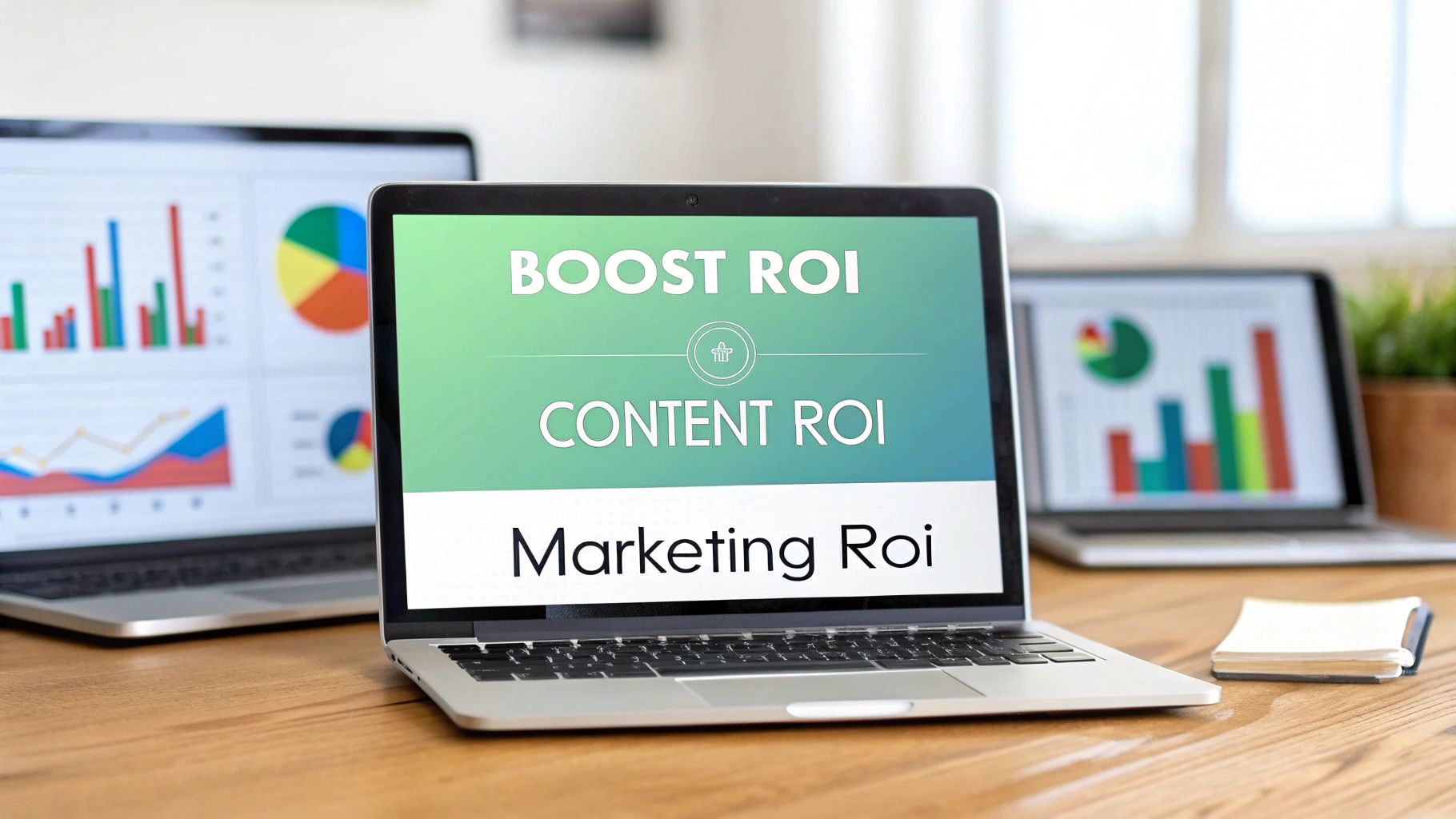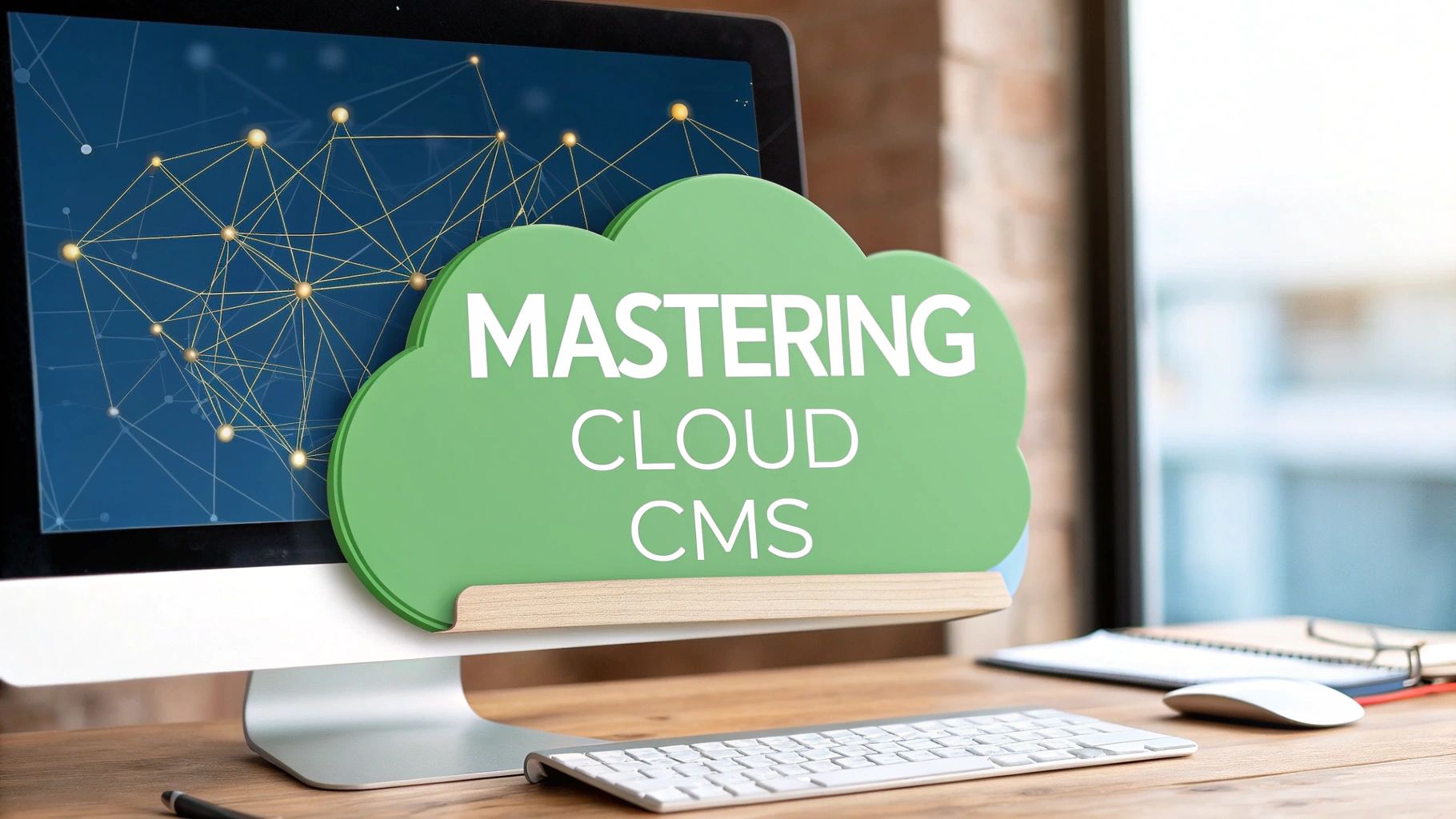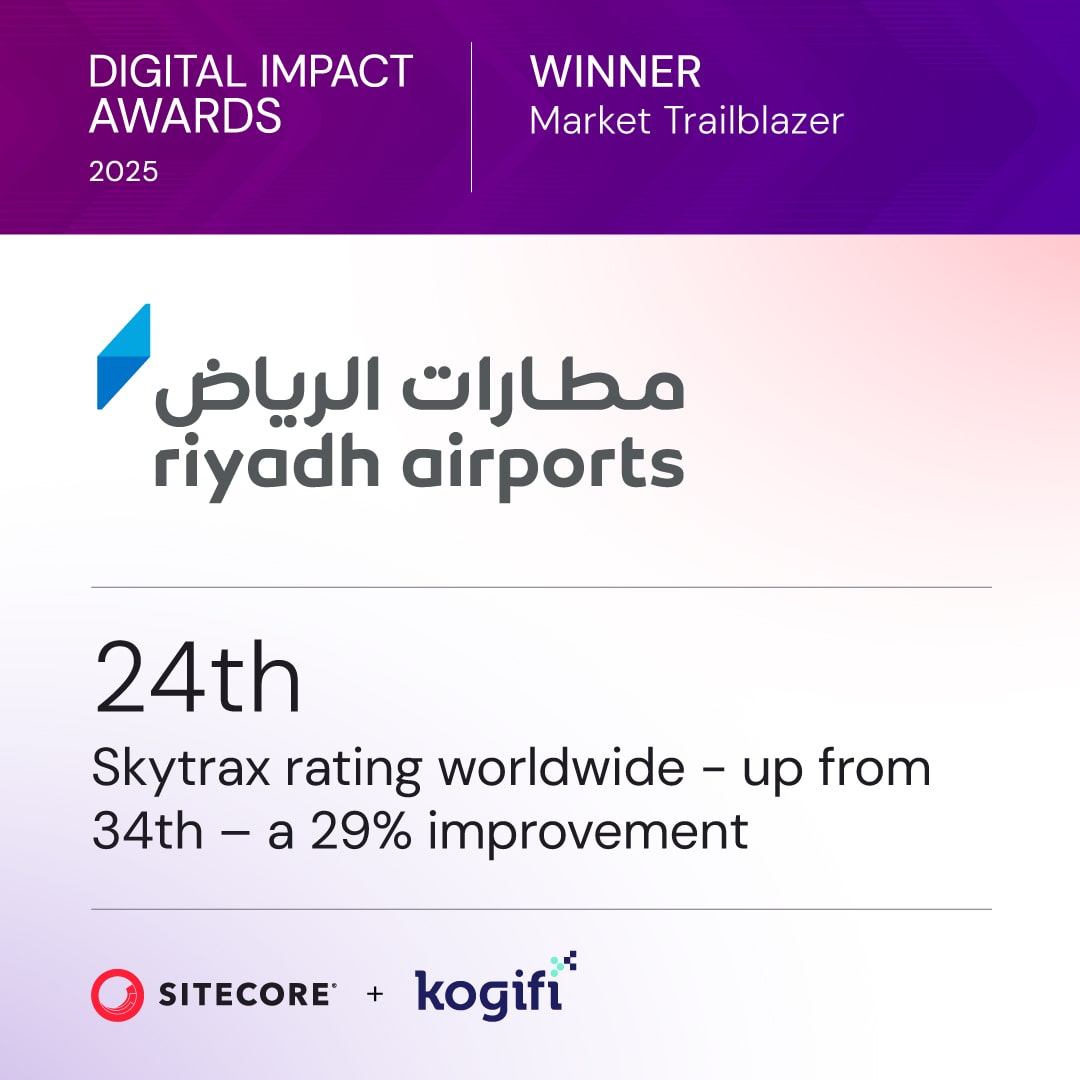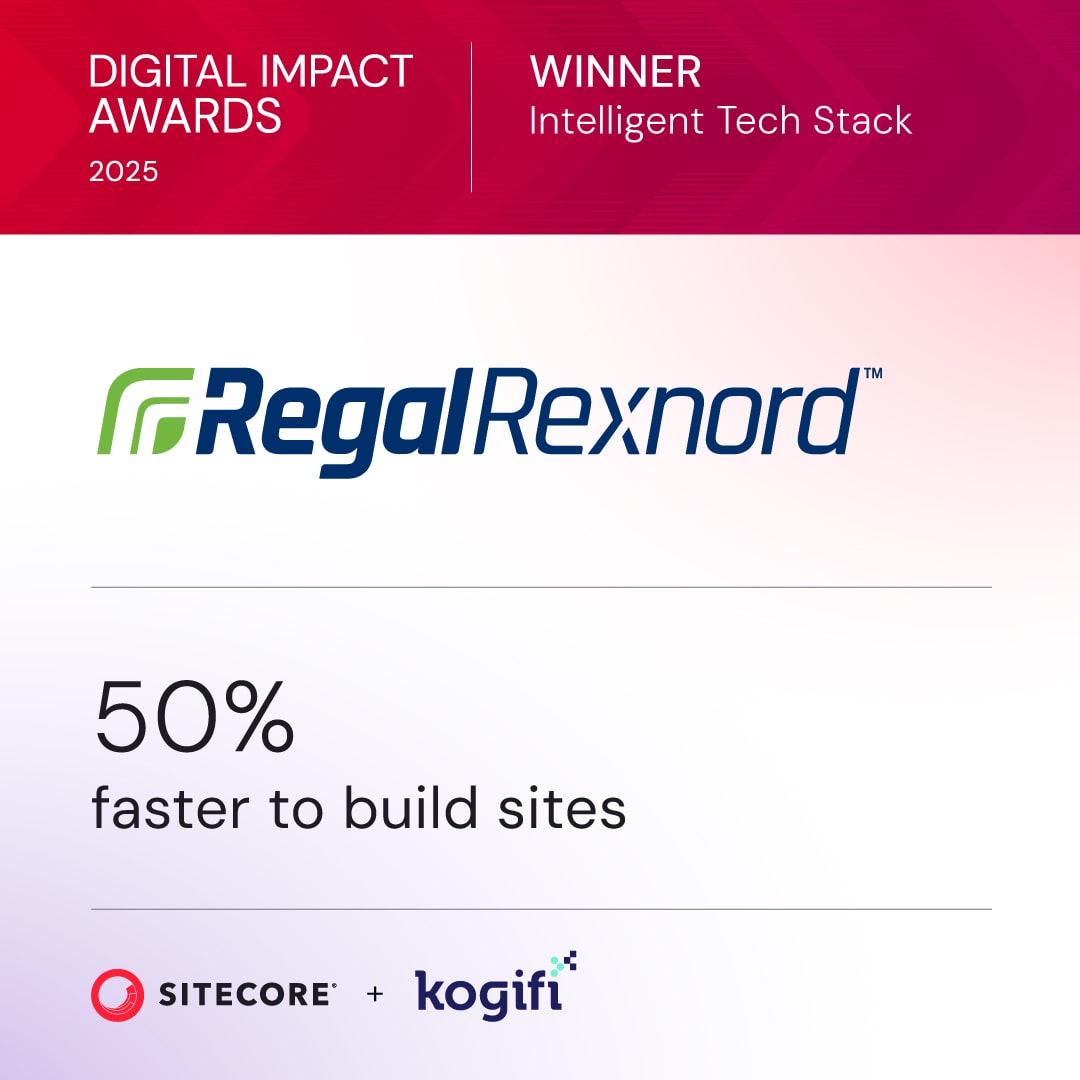Talk to anyone in marketing long enough, and the topic of ROI is bound to come up. In its simplest form, content marketing return on investment is about measuring the profit you get back from what you spend on content. But if you stop there, you're only seeing a fraction of the story. Focusing just on immediate sales is like judging a tree by its first sapling—you miss all the long-term growth, shade, and fruit it will eventually provide.
Defining Content Marketing ROI Beyond Revenue

When the C-suite asks about content marketing ROI, they usually want a straightforward, dollar-for-dollar breakdown. And while connecting content directly to revenue is absolutely critical, that’s not the whole game. The real ROI of content marketing is a blend of hard numbers and the kind of long-term value that doesn't always show up neatly on a spreadsheet.
Think of your content less like a single sales pitch and more like a strategic asset that keeps on giving. Every blog post, whitepaper, and video you create adds to a growing ecosystem that builds trust, establishes your brand as an authority, and quietly lowers your marketing costs over time.
The Two Sides of Content ROI
To really get a handle on its full impact, we need to look at ROI from two angles. This dual perspective is what separates good content programs from great ones—and it’s the key to getting buy-in and justifying your budget.
- Tangible Returns: These are the numbers you can take to the bank. We're talking about direct, quantifiable results like new leads generated, sales closed from a blog post, or a measurable drop in customer acquisition costs. They’re the easiest to track and report.
- Intangible Returns: This is the softer, long-term value that’s harder to measure but often more powerful. It includes things like building brand authority, earning customer loyalty, boosting your organic search rankings, and gathering priceless insights about your audience.
A powerful Digital Experience Platform (DXP) like Sitecore is designed to capture both sides of this coin. It can connect a user’s interaction with a piece of content directly to a conversion, giving you clear revenue attribution. At the same time, its analytics and personalization tools help you start putting numbers to those softer metrics, showing how content is nurturing customer loyalty and increasing lifetime value.
The Proven Power of Content Investment
This broader view of ROI isn't just theory; the data backs it up. Content marketing consistently punches above its weight, delivering some of the best returns of any marketing channel out there.
For instance, email marketing—a cornerstone of content strategy—can bring in an incredible $42 for every $1 spent. SEO, which is fueled by great content, builds on itself to deliver a long-term return averaging $22.24 per dollar invested. It’s no wonder 83% of marketing leaders say that proving ROI is a top priority, even if only 36% feel they have a good handle on how to do it. (Discover more insights about marketing ROI statistics on firework.com).
A holistic view of ROI prevents you from abandoning high-value strategies just because their financial impact isn't immediate. It reframes content not as an expense, but as a long-term investment in business growth and resilience.
Ultimately, getting this comprehensive model right is the first step toward building a business case that stakeholders can’t ignore. It shifts the conversation from, "How much did this blog post make?" to, "How is our content strategy building a more valuable business?"
Calculating Your Content Marketing ROI
To really get a grip on your content marketing return on investment, we need to ditch the guesswork and lean on a clear, repeatable formula. While the idea might feel a bit intimidating, the math itself is actually pretty simple. It’s what gives you the financial proof you need to justify your budget and show everyone what’s working.
The classic formula for ROI goes like this:
Content Marketing ROI = (Return - Investment) / Investment x 100%
This little equation spits out a percentage that tells you exactly how much profit you’re making for every dollar you spend. If your ROI is positive, you’re in the green—your content is bringing in more money than it costs. A negative number is just a sign that it’s time to tweak your strategy.
The real trick isn't the math; it's nailing down what goes into the 'Return' and 'Investment' buckets.
Breaking Down Your Content Investment
First up, let's talk about Investment. This is the total cost of taking a piece of content from a bright idea to a published asset that your audience can actually see. It's way more than just paying a writer. You have to account for every resource that touched the project.
Key investment costs usually include:
- Content Creation Costs: This is the straightforward stuff—what you pay your in-house writers, freelance creators, graphic designers, and video producers.
- Team Salaries: You'll want to factor in a portion of the salaries for the marketers, editors, SEO specialists, and managers who guide the content strategy and get it over the finish line.
- Platform and Technology Costs: This can be a big one. It covers licensing fees for powerful tools like Sitecore Experience Platform (XP) or the costs tied to using a SharePoint-based system to manage all your content.
- Distribution and Promotion Spend: Don't forget the money you spend to get eyes on your content. This includes your budget for paid social media ads, search campaigns, or any influencer marketing you do to amplify its reach.
By tracking these expenses down to the dollar, you build a solid, accurate baseline for the "Investment" side of your ROI calculation.
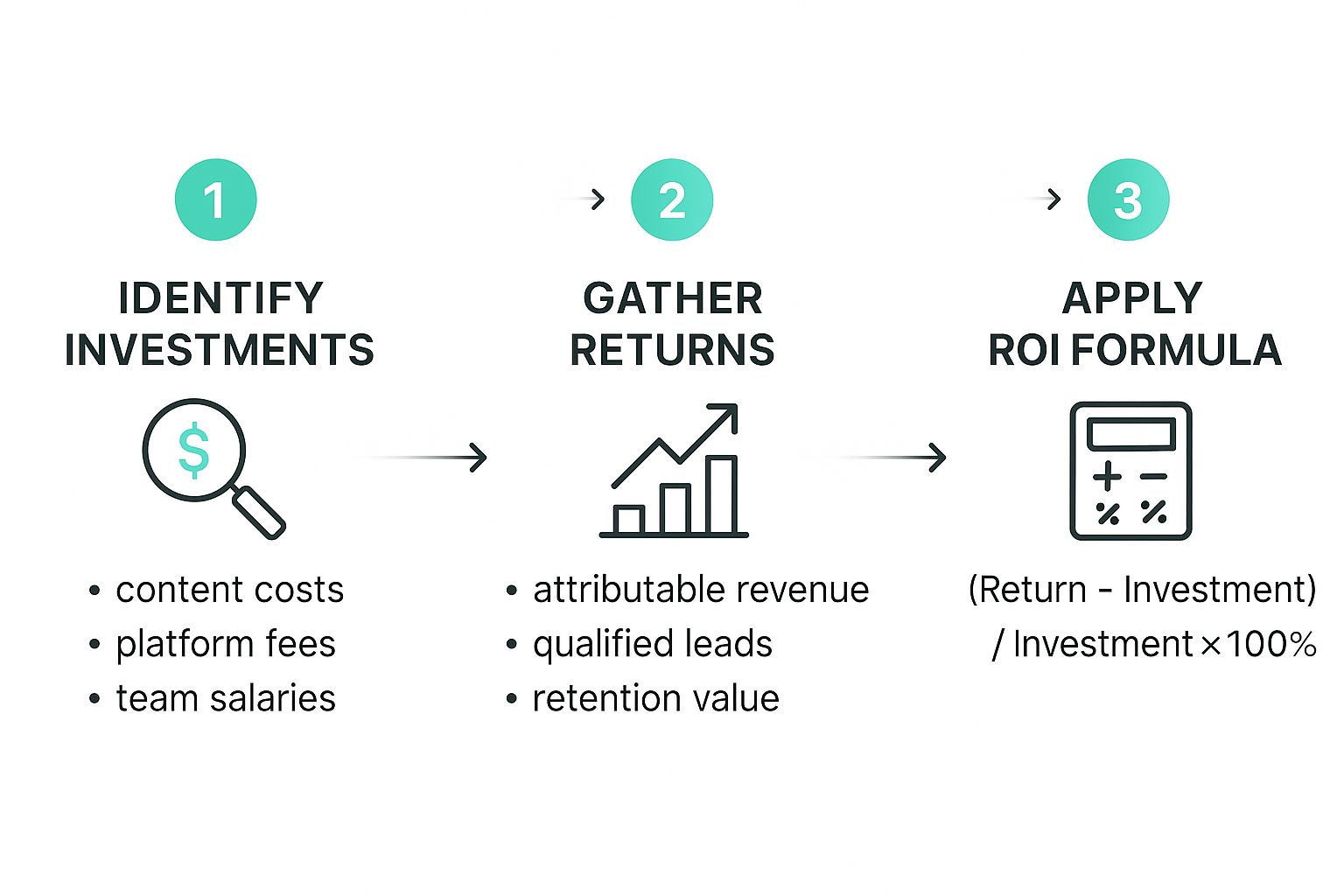
This just goes to show that calculating ROI isn’t some abstract art. It's a structured process that relies on clean data for both what you spend and what you earn back.
Identifying Your Content Return
Now for the fun part: the Return. This is the total revenue and financial value your content generates. Accurately tracking this is where a Digital Experience Platform (DXP) like Sitecore really shows its worth, because it connects the dots between content and cash.
Let's look at the numbers you need to track.
Breaking Down Content Marketing ROI Components
To get a clear picture, it helps to organize all the moving parts. Here’s a simple table that breaks down the common costs (your Investment) and revenue drivers (your Return).
Thinking about ROI in these structured terms makes it much easier to gather the right data and build a compelling business case for your content efforts.
Some primary return metrics you'll want to focus on are:
- Attributable Revenue: With a platform like Sitecore, you can follow a customer's entire journey, from the first blog post they read to the final purchase they make. This lets you directly tie a portion of that sale back to the specific content that nudged them along.
- Value of Qualified Leads: You can assign a real dollar value to the high-quality leads you get from content like whitepaper downloads or webinar sign-ups. For example, if 10% of your leads eventually convert and your average sale is $5,000, then you know every single lead is worth $500.
- Customer Retention Value: Great content doesn't just attract new customers; it keeps the ones you have. It can boost loyalty and reduce churn. You can calculate the value of keeping customers who regularly engage with your tutorials, knowledge base, or other post-purchase content.
If you really want to understand your content's financial impact, you have to know how to measure content performance effectively. This means focusing on the metrics that tie directly back to business goals. For a closer look at the financial modeling behind these platforms, check out our guide on the DXP ROI calculator for measuring digital investment impact.
When you connect all these dots, you can build a powerful, data-driven story that proves the financial success of your content strategy.
Using Sitecore XP for Advanced ROI Tracking
Figuring out your content marketing return on investment is one thing. Having the right tech to do it accurately and at a large scale is a whole different ballgame. This is where a top-tier Digital Experience Platform (DXP) like Sitecore Experience Platform (XP) really shines, moving way beyond simple content management to become a powerhouse for proving—and improving—your ROI. It’s engineered to connect every click and view with real business results.
While basic analytics tools can tell you how many people landed on a page, Sitecore XP is built to tell you what those visits are actually worth. It does this by mapping individual customer journeys across every single touchpoint, from their first anonymous visit to their last conversion as a loyal customer. This process builds a comprehensive, unified profile for each user, giving you the deep data needed for a truly precise ROI calculation.
Here’s a glimpse of the Sitecore Experience Platform interface, which brings all the tools for advanced tracking and personalization into one place.

This dashboard shows how Sitecore weaves content management, marketing automation, and analytics together. For marketers, it means you can manage and measure the entire customer journey without juggling multiple platforms.
Assigning Value to Every Action with Goals
The real magic behind ROI tracking in Sitecore is the ability to create and assign monetary value to Goals. Think of a Goal as any specific action a user takes that signals they’re moving closer to a purchase or becoming more engaged with your brand.
A sale is the ultimate goal, of course, but Sitecore lets you put a dollar value on all the crucial steps that lead up to it.
- Whitepaper Download: Let's say you know that 1 in 20 people who download a specific whitepaper eventually become a customer, and the average customer value is $10,000. You can assign a Goal value of $500 to that download.
- Webinar Registration: If you know webinar attendees convert at a 5% rate, you can assign a proportional monetary value to that registration.
- "Contact Us" Form Submission: This is a high-intent action. You can value it based on the close rate of leads that come through that specific form.
By attaching a dollar figure to these non-transactional events, Sitecore automatically calculates the value generated by the content that drove them. All of a sudden, a blog post isn’t just an article—it's a measurable asset contributing directly to your sales pipeline. To dig deeper into the principles behind this, our article on how to measure ROI provides a great foundation.
Visualizing the Customer Journey with Path Analyzer
One of Sitecore's most powerful tools for proving content ROI is the Path Analyzer. It gives you a clear, visual map of the different routes users take as they move through your website. It’s like having a GPS tracker on every visitor, showing you exactly which pieces of content they interacted with on their way to completing a Goal.
Path Analyzer takes the guesswork out of content attribution. It shines a light on the "assist" role that your content plays, revealing which blog posts, videos, or case studies are the unsung heroes of your conversion funnels.
With this tool, you can finally answer some critical ROI questions:
- Which blog posts are most effective at pushing users toward high-value product pages?
- What’s the most common path that leads to a successful form submission?
- Where are users dropping off, and which content is failing to keep them moving?
This level of insight lets you double down on the content that’s actually working and either fix or ditch the assets that aren’t. You can see, in black and white, the financial impact of your most influential content. Industry data backs this up; 73% of B2B marketers say content like blogs and white papers are their most effective lead generation strategy, and Sitecore gives you the means to prove it. Discover more insights about the latest content marketing statistics.
Boosting ROI with Personalization and A/B Testing
Finally, Sitecore XP doesn't just help you track ROI—it helps you actively grow it. The platform's built-in personalization and A/B testing tools are designed to optimize conversion rates, which in turn drives up your return.
With personalization, you can serve different content to different audience segments based on their behavior, location, or any other data you have on them. For example, you could show a case study that’s relevant to a visitor’s industry or feature a product they’ve looked at before. These tailored experiences make conversions far more likely.
At the same time, A/B testing allows you to experiment with different headlines, calls-to-action, or page layouts to see what truly resonates with your audience. By continuously testing and refining, you can systematically improve the performance of your key content and landing pages, making sure you’re squeezing every last drop of value from every visitor. This direct link between platform features and financial outcomes is what makes Sitecore XP an essential tool for any serious content marketer.
Integrating SharePoint for Efficient Content Operations
When we talk about calculating content marketing ROI, it's easy to get fixated on the "Return" side of the equation. But what if you could get a bigger return by shrinking the "Investment"? A powerful—and often overlooked—strategy is to make your content creation process dramatically more efficient. This is exactly where integrating a collaboration powerhouse like SharePoint with a premier DXP like Sitecore gives you a serious edge.
Operational efficiency is the hidden lever for boosting ROI. When your teams are drowning in disjointed workflows, endless email threads, and version control nightmares, your costs are quietly piling up. Every hour wasted on administrative friction is an hour not spent creating value, which directly inflates your investment and eats into your potential return.
Streamlining the Content Supply Chain
Think of your content process like a manufacturing supply chain. An idea is sourced, developed into a draft, sent for review, approved, and finally published and distributed. A Sitecore and SharePoint integration essentially automates this entire assembly line, getting rid of the manual handoffs and bottlenecks that drain your budget.
SharePoint is brilliant as a central hub for creating and collaborating on content. Its powerful document management, co-authoring features, and detailed permission controls make it the perfect sandbox for teams to draft and polish their work. Writers, designers, legal reviewers, and subject matter experts can all operate in a single, controlled environment.
By centralizing asset creation and review in SharePoint, you create a single source of truth. This drastically reduces the risk of publishing outdated or off-brand content—a costly mistake that can damage brand reputation and require expensive rework.
Once an asset is finalized in SharePoint, a connector seamlessly pushes it into Sitecore. From there, it’s ready for personalization, scheduling, and publication across all your digital channels. This integration ensures strict brand consistency and slashes your time-to-market for new campaigns, letting you jump on opportunities much faster. The productivity gains from this streamlined workflow directly lower the salary costs and overhead tied to content production.
Tangible Benefits of a Sitecore and SharePoint Integration
Bringing these two enterprise platforms together delivers direct, measurable benefits that hit your bottom line. It's about turning operational excellence into financial gain. By optimizing the "Investment" piece of the ROI formula, you can achieve a higher return without even touching your revenue numbers.
Here’s a look at how this integration directly improves your content marketing ROI:
- Reduced Creation Costs: With seamless collaboration and automated workflows, your team spends fewer hours on each piece of content. That translates directly to lower labor costs.
- Accelerated Time-to-Market: Getting campaigns and content live faster means you start generating leads and revenue sooner. This shortens the payback period on your investment.
- Enhanced Brand Consistency: A single source of truth for all assets prevents expensive branding mistakes and ensures a cohesive customer experience, which builds trust and long-term value.
- Centralized Asset Management: All your digital assets are stored, tagged, and managed efficiently, making them easy to find and repurpose. This extends the life of your existing content and cuts down on the need to create new assets from scratch.
For any organization looking to build a scalable and cost-effective content engine, exploring SharePoint solutions is a critical first step toward maximizing operational efficiency. This integration transforms content operations from a cost center into a strategic driver of profitability.
Amplifying ROI with Social and User Content

Creating killer content is only half the job. If you want a real content marketing return on investment, you have to make sure people actually see it. Because great content that sits on a server gathering digital dust delivers a return of exactly zero. This is where amplification—specifically through social media and user-generated content (UGC)—comes in. It’s how you turn your core assets into revenue-drivers and sources of genuine social proof.
The trick is to go beyond just dropping links on your social channels. A smart strategy weaves your social campaigns directly into your main content hub and gets your audience involved in telling your brand’s story. This creates a powerful feedback loop: your official content inspires people to create their own, which then magnifies your brand’s credibility and reach in a way paid ads just can't match.
Centralizing Your Social Strategy with Sitecore Content Hub
Trying to manage content across a dozen different social platforms can get messy, fast. That chaos drives up the "Investment" side of your ROI equation without guaranteeing better results. This is precisely the problem Sitecore Content Hub was built to solve. It acts as a command center, giving you one place to plan, create, manage, and push out all your social and user-generated content for a perfectly consistent brand experience.
Think of it as the single source of truth for every approved image, video, tagline, and customer quote. Instead of social media managers hunting through scattered folders for the right assets, everything is organized and tagged within Content Hub. This setup empowers your team to quickly build and schedule campaigns that are perfectly in sync with your bigger content strategy, all while keeping the brand voice on point.
When you use a tool like Sitecore Content Hub, you’re not just getting organized—you’re industrializing your content amplification. That operational efficiency means a lower cost per post and a much healthier ROI from your social media efforts.
This centralized system also makes it ridiculously easy to repurpose content. A snippet from a whitepaper can be spun into a series of thoughtful LinkedIn posts. A glowing customer quote can become a slick graphic for Instagram. A key data point can be animated for a short-form video. Content Hub streamlines the whole process, letting you squeeze every last drop of value out of each asset you create.
Fostering and Managing User-Generated Content
User-generated content is the holy grail of social proof. It’s raw, it's believable, and it’s incredibly effective. In fact, a staggering 90% of shoppers say that UGC has influenced what they buy. The real challenge for brands is figuring out how to collect, moderate, and deploy all that authentic content without it becoming a full-time job.
This is another spot where the Sitecore ecosystem gives you a serious edge. You can use its tools to run campaigns that specifically ask for UGC, like photo contests or drives for testimonials. As submissions roll in, they can be piped directly into Sitecore Content Hub for tagging, approval, and storage right alongside your official brand assets.
Here’s how you can put UGC to work to boost your ROI:
- Product Page Integration: Sprinkle authentic customer photos and reviews right onto your product pages. This builds massive trust and can seriously bump up conversion rates, especially since 81% of consumers are willing to pay more for products backed by UGC.
- Social Media Campaigns: Weave the best user content into your paid and organic social campaigns. Ads that feature real people using your stuff almost always get better engagement and have lower costs than ads with polished, corporate-looking images.
- Website Galleries: Build out dedicated galleries showing how real customers are using your products in the wild. This doesn’t just build a sense of community; it serves as a powerful, visual testament to your product's real-world value.
Tapping into the Power of Social Commerce and Influencers
The line between social media and online shopping has all but disappeared. Social networks were projected to account for about 17.11% of total online sales globally in 2025, and the social commerce space is exploding. This growth is being driven hard by influencer marketing and the unstoppable rise of short-form video. Consider this: roughly 49% of consumers admit to making monthly purchases based on what they see in influencer posts. And for marketers using video, 71% report short-form video delivers their best ROI. Learn more about the compelling ROI of social media marketing.
When you integrate these elements with your Sitecore-powered digital properties, you create a seamless journey from discovery to checkout. By embedding shoppable posts and influencer content directly on your site, you capture that buying intent the second it hits, dramatically increasing the direct financial return from all your social and user content initiatives.
Building the Business Case for Content Marketing
Getting the green light for your content program means going beyond a simple budget request. You need to build an ironclad business case that spells out the content marketing return on investment in plain English. This is all about translating your strategies into a story of financial growth and strategic advantage that the leadership team simply can't ignore.
Your presentation has to be grounded in data, projecting realistic outcomes backed by hard evidence from your digital platforms. Instead of speaking in generalities, use the powerful analytics within Sitecore to forecast performance. Pull data from Path Analyzer to show which content types have historically driven the most valuable user actions, and use that to project future lead generation.
Framing the Financial Argument
When you're in the room with leadership, you have to speak their language—and that language is financial returns. Frame your argument around two core pillars: the direct revenue impact and the long-term strategic value.
Start with the tangible benefits your program will deliver.
- Direct Financial Benefits: Use your Sitecore data to create specific, data-backed projections. For instance, you could forecast a 15% increase in qualified leads by creating more targeted bottom-of-funnel content or project higher sales conversions by implementing personalization rules you’ve already tested.
- Long-Term Strategic Value: Explain how content builds assets that appreciate over time. A strong content library boosts organic search authority, which reduces your reliance on paid media. And consistent, valuable content deepens customer relationships, increasing loyalty and lifetime value.
A strong business case doesn’t just ask for money; it presents a clear investment thesis. It shows stakeholders exactly how their capital will be deployed to generate a measurable return, transforming the content team from a cost center into a predictable revenue engine.
For a broader perspective on establishing the financial viability of content, it’s worth learning how to make money blogging and drive income effectively.
A Checklist for Securing Buy-In
Building your case is a methodical process. Before you walk into that crucial meeting, make sure every piece of your argument is polished and ready. This checklist will help you cover all the essential bases to win the support and budget your content program deserves.
- Define Clear Objectives: Tie every proposed content initiative directly to a core business goal, whether it’s increasing market share, improving customer retention, or breaking into a new vertical.
- Present ROI Projections: Use industry benchmarks and, more importantly, your own historical data from Sitecore to forecast the expected return on your proposed investment. Show the math clearly.
- Showcase Operational Efficiency: Explain how integrating platforms like Sitecore and SharePoint will streamline workflows, cutting content creation costs and maximizing your team's output. This shows you’re focused on managing the "Investment" side of the ROI equation. For more on this, exploring the benefits of enterprise content management can seriously strengthen your argument.
- Outline Key Metrics: Detail exactly which KPIs you will use to measure success. Explain how you will track them within Sitecore and the reporting schedule you’ll follow to keep stakeholders in the loop.
- Mitigate Perceived Risks: Every investment has risks. Acknowledge potential challenges, like the time it takes for SEO efforts to mature, and explain your strategy for delivering short-term wins while you build long-term value.
With this structured approach, your budget request becomes a strategic business proposal. It makes it far easier for leadership to see the value and say "yes."
Frequently Asked Questions
When you get down to the brass tacks of content marketing return on investment, a few key questions always come up. Let’s tackle the most common ones marketers grapple with and show how a powerful platform like Sitecore can bring some much-needed clarity.
How Long Does It Take to See Content Marketing ROI?
This is the million-dollar question, and the honest-to-goodness answer is: it depends. Content marketing isn't like flicking on a paid ad and watching the clicks roll in. It’s a long game, much more like investing for compound interest than a get-rich-quick scheme.
You'll usually start seeing the early signs—the leading indicators—within the first 3-6 months. Think increased organic traffic, climbing keyword rankings, or a healthy bump in your email subscribers. But a direct, clear financial return? That takes a bit more patience.
Most marketing programs start to show a real, positive financial ROI somewhere between 6 and 12 months. This is the sweet spot where your early SEO work starts to pay off and your content library hits a critical mass, consistently bringing in and nurturing leads.
How Much Should We Invest in Content Marketing?
There’s no magic number here. The right budget really hinges on your industry, your specific business goals, and how crowded your market is. But we can look at what the winners are doing to get a solid benchmark.
Research consistently shows that 79% of the most successful companies put more than 10% of their total marketing budget toward content. That’s a huge signal. Top performers don't see content as a side project; they see it as a primary engine for growth.
A great place to start is to tie your investment directly to your strategic goals. Just make sure you've got enough fuel in the tank to not only create high-quality content but also get it in front of the right people.
How Do I Track ROI with So Many Different Channels?
Trying to track ROI across a dozen different channels is a classic headache. You end up with siloed data, a messy attribution picture, and a lot of guesswork. This is exactly where a unified platform like Sitecore becomes a game-changer.
Instead of trying to manually piece together data from your blog, social media, email campaigns, and paid ads, Sitecore Experience Platform (XP) gives you a single view of each customer. It tracks every interaction they have with you, no matter the channel, and builds a complete journey map.
This lets you do some pretty amazing things:
- Assign value to multiple touchpoints, not just the last thing someone clicked.
- Use tools like Path Analyzer to actually see which content combinations are sealing the deal.
- Attribute revenue accurately to every piece of content that played a part in a sale.
Ultimately, this kind of integrated approach gets you out of the weeds of channel-specific metrics and gives you a true, holistic understanding of your content marketing ROI.
Ready to stop guessing and start proving the value of your content? Kogifi specializes in implementing and optimizing Sitecore and SharePoint solutions to provide crystal-clear ROI tracking. Let's build your high-performance content engine.

















